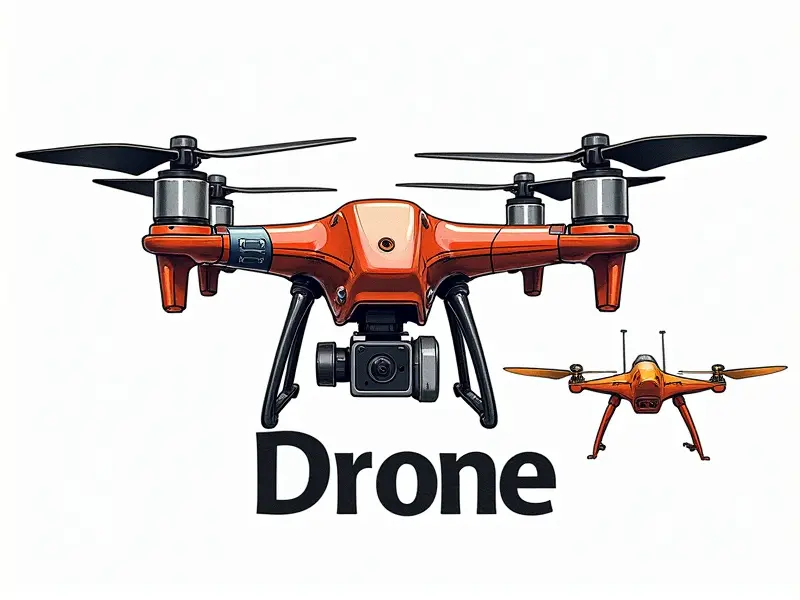How far can drones see?

How Far Can Drones See in FPV Racing?
In the exhilarating world of first-person view (FPV) racing, drones are pushed to their limits for speed and agility. However, one crucial aspect often overlooked is how far these high-speed machines can see. The visibility range of a drone's camera plays a pivotal role in ensuring that pilots have clear line-of-sight during races.
The typical FPV racing drone uses a 720p or higher resolution camera to transmit live video feed back to the pilot’s goggles, allowing them to navigate through complex courses. The distance at which these cameras can effectively transmit real-time images is critical for maintaining control and avoiding collisions. Generally, high-quality FPV setups offer a range of around 1-3 kilometers under optimal conditions.
Max Drone Vision Range Explained
The maximum vision range of a drone depends on several factors including the type of camera used, its resolution, transmission technology (like Wi-Fi or 5.8GHz), and environmental conditions such as weather and obstacles. High-resolution cameras with advanced optics can extend visibility significantly, but this comes at the cost of increased weight and power consumption.
For instance, a high-end FPV racing drone equipped with a 1080p camera transmitting at 60 frames per second (fps) will have better clarity and responsiveness compared to lower resolution models. This enhanced visual fidelity allows pilots to see farther without compromising on image quality.
Beyond the Horizon: Drone Sight Range
While drones can theoretically transmit video signals beyond line-of-sight distances, practical limitations such as signal interference from buildings or terrain make it challenging to maintain a stable connection. The horizon serves as a natural boundary for drone vision range due to the curvature of the Earth.
In practice, most FPV racing setups aim to keep the drone within 3-5 kilometers of the pilot’s location. This ensures that signals remain strong and clear, reducing latency and improving overall performance during races.
Factors Affecting Drone Camera Reach
- Camera Quality: Higher resolution cameras provide clearer images but may consume more power.
- Transmitter Frequency: Different frequencies (e.g., 5.8GHz vs. 900MHz) offer varying levels of range and resistance to interference.
- Weather Conditions: Rain, fog, or heavy snow can degrade signal strength and reduce visibility.
- Obstacles: Buildings, trees, and other objects obstruct signals, limiting the effective range of drone cameras.
Enhancing Drone Vision for RC Pilots
To maximize the visual range of FPV racing drones, pilots can adopt several strategies. Upgrading to higher quality components like better antennas, more powerful transmitters, and improved camera optics can extend the effective range considerably.
In addition, utilizing advanced telemetry systems that provide real-time data on signal strength, battery levels, and other critical metrics helps maintain optimal performance throughout a race.
Long-Range Drone Surveillance Capabilities
Beyond FPV racing, drones are increasingly used for surveillance purposes where long-range vision is crucial. For instance, in agriculture, drones equipped with high-resolution cameras can monitor vast fields from elevated positions to detect crop health issues early on.
The ability of these drones to transmit detailed images over extended distances enables farmers and researchers to make informed decisions based on comprehensive data collected from afar.
Distance Perception in FPV Racing
In FPV racing, accurate distance perception is key for navigating tight corners and avoiding obstacles. Pilots rely heavily on the clarity of transmitted video feeds to gauge their position relative to other racers or course elements.
Enhancing this perception through better camera quality and signal stability ensures that pilots can react quickly and confidently during high-speed maneuvers, enhancing overall performance in competitive settings.
Drone Camera Visibility Limits
The visibility limits of drone cameras are determined by both technical specifications and environmental constraints. While modern drones offer impressive capabilities, there are inherent limitations that cannot be overcome simply through upgrades.
Pilots must understand these limitations to set realistic expectations for their equipment’s performance in various scenarios, ensuring safe and effective operation under all conditions.
Boost Your Drone's Visual Range
To enhance the visual range of your FPV racing drone, consider implementing the following tips:
- Upgrade Camera Components: Invest in high-quality cameras with superior optics and resolution capabilities.
- Select Appropriate Frequencies: Choose transmission frequencies that offer optimal balance between range and interference resistance.
- Optimize Antenna Placement: Properly positioning antennas can significantly improve signal strength and coverage area.
Secrets to Long-Distance Drone Vision
To achieve long-distance vision with drones, it is essential to understand the underlying technologies and optimize them for maximum performance. This involves selecting appropriate hardware components tailored specifically towards extended range requirements.
Additionally, leveraging advanced features such as digital signal processing (DSP) can further enhance image clarity over longer distances, providing pilots with clearer visuals even at extreme ranges.
Optimal Viewing Distances for RC Models
Determining the optimal viewing distance for remote-controlled (RC) models depends on specific use cases and environmental factors. For FPV racing, a range of 3-5 kilometers typically offers a good balance between signal quality and operational flexibility.
For surveillance applications, distances may extend further depending on the mission requirements and available technology. Careful planning and setup are crucial to achieving optimal performance in any given scenario.
Conclusion
The ability of drones to see far is a critical factor influencing their effectiveness across various applications ranging from FPV racing to surveillance missions. By understanding key elements such as camera quality, transmission technology, and environmental impacts, users can optimize their drone’s visual range for peak performance.
Incorporating advanced techniques and hardware upgrades will further enhance these capabilities, enabling drones to reach farther than ever before while maintaining reliability and clarity in transmitted visuals.

